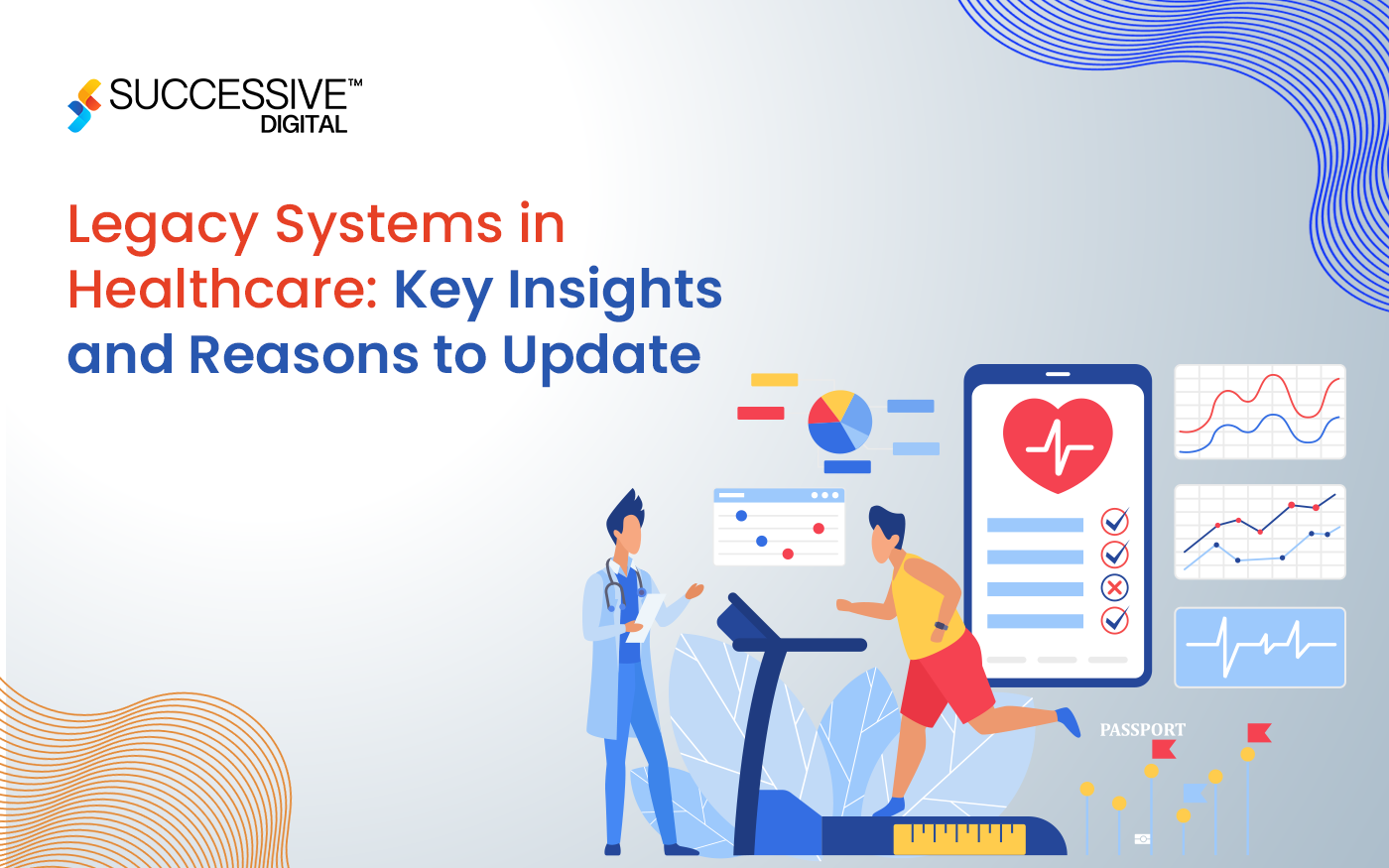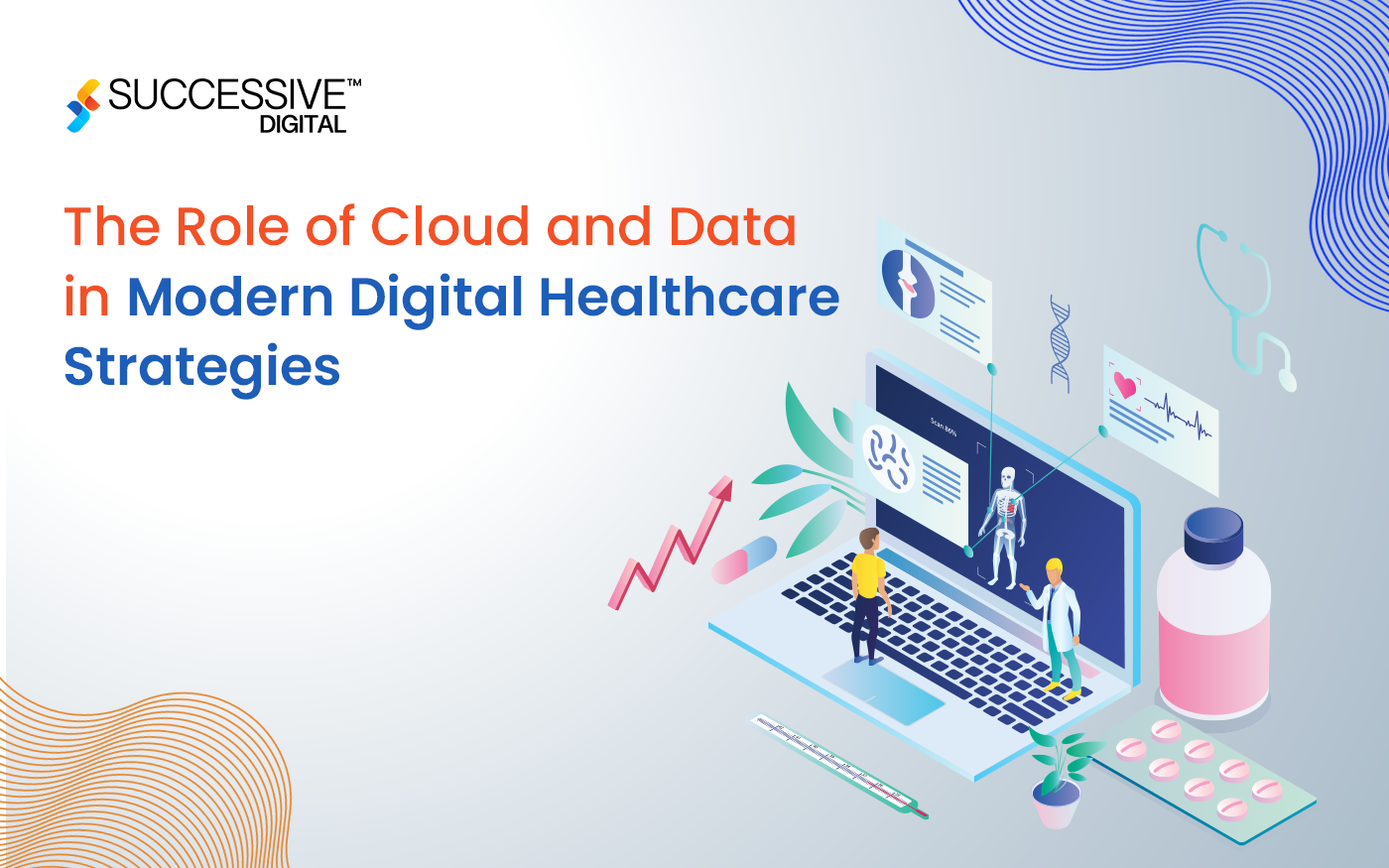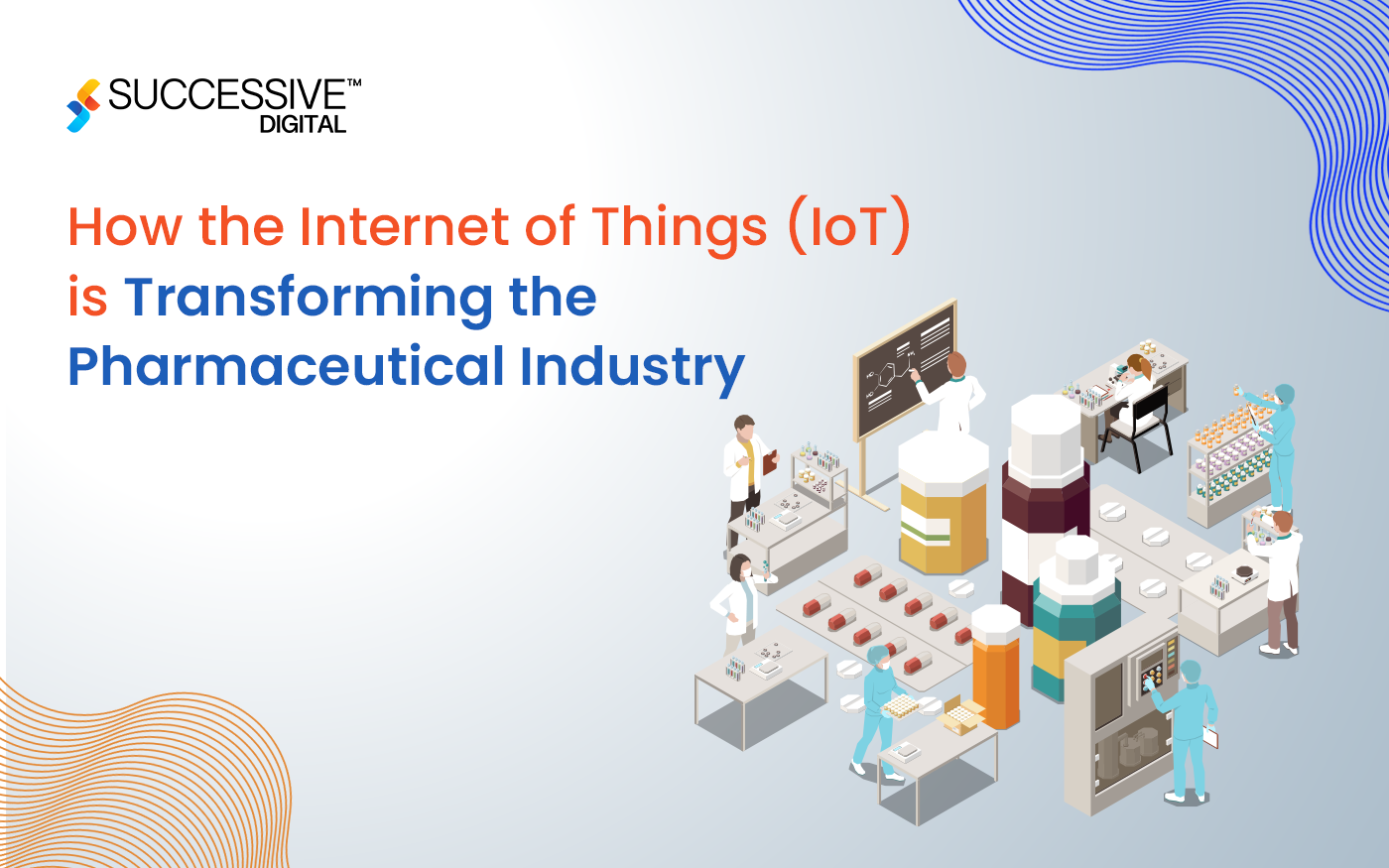Do you know the global telehealth market is expected to grow at a CAGR of 24.3% from 2024 to 2030? The increasing demand for remote healthcare services is shaping the healthcare industry’s future. And, the enhanced care convenience and accessibility of doctor-on-demand apps ensure improved patient outcomes, reduced paperwork, and low service costs.
Doctor-on-demand apps connect patients and healthcare providers effectively, redefining patient-doctor interaction with intelligent technologies like AI, AR/VR, data analytics, and Cloud. Hence, these advanced telehealth app solutions ensure an effective, patient-centered future by improving smartphone accessibility and convenience.
The global online doctor consultations market is expected to generate a market volume of US$35.83bn, growing at a CAGR of 8.05% from the period of 2024 to 2028. As a result, doctors, pharmacies, and healthcare organizations are investing in doctor-on-demand app development to extend healthcare services beyond traditional boundaries and reach more users. This not only aims to leverage the increasing user base but also to provide accessible healthcare services directly to people’s doorsteps.
What is a Doctor-on-Demand App and Benefits?
A doctor-on-demand application is a type of telehealth service. It offers remote consultations and digital prescriptions to patients in the comfort of their homes or wherever they like. With ease of communication, these applications have proven to significantly help people with busy schedules or who want to manage and monitor long-term health issues effectively.
With doctor appointment app development, you enable your patients to connect with doctors and healthcare facilities more effectively. Here are the more benefits that doctor-on-demand apps offer:
-
Appointment Management
With an on-demand healthcare application, you do not have to wait for days or long queues to book appointments. Instead, you can find specialists in your area, access their schedule, and fix an appointment at a convenient time. Therefore, these applications bring healthcare services to remote locations where access to proper treatment is often challenging, eliminating the need to wait weeks for medical assistance.
-
Electronic Health Records
Doctor-on-demand platforms allow healthcare practitioners and patients to store crucial information like prescriptions and diagnoses on mobile devices, reducing the paperwork significantly. Additionally, a reputable healthcare app development company ensure these platforms comply with government regulations to maintain patient privacy.
-
Cost-effective Healthcare Services
Telehealth solutions reduce costs by providing real-time, convenient healthcare services that minimize expensive ER visits and hospital admissions. These cost-effective, user-centric apps enhance overall healthcare accessibility and quality.
-
Drive High Revenue
Doctor-on-demand apps allow doctors to streamline their services without additional costs for staff and infrastructure, leading to higher ROI. The growing trust and usage of these apps drive increased revenue for doctors, healthcare institutions, and caregivers, making mobile apps key players in healthcare.
-
Enhances Services and Competitive Edge
On-demand healthcare apps improve patient experience and communication, which help healthcare providers reach a broader user base and modernize their services. Hence, by entering this market, you can capitalize on the growing demand and stay ahead of the competition.
Doctor-on-Demand App Development Architecture
Cloud infrastructure for doctor-on-demand app development ensures scalable, secure, and reliable data storage and processing. Additionally, cloud solutions offer flexible resource management, enabling the app to handle varying loads and ensuring optimal performance.
This architecture works in the following way:
In the first step, users interact with the Dr on demand application through mobile or web browser to access features like:
- Searching for doctors
- Booking appointments
- Managing profiles
Requests from the client apps are sent to the API Gateway, which routes these requests to the appropriate microservices based on the endpoint, performing the specific functionalities, such as:
- User Management for registration and login.
- Doctor Management is responsible for handling doctor profiles and schedules.
- Appointment Service for booking and managing appointments.
- Video Consultation for facilitating video calls.
- Medical Records for storing and retrieving patient data.
- Payment Service for handling transactions.
- Notification Service for sending alerts and reminders.
- Pharmacy Integration for managing prescriptions.
- Feedback Service for collecting user feedback.
After managing the service requests, each service interacts with its corresponding managed database to store and retrieve data. Next, third-party integrations come into action for services like:
- Secure video consultations using Twilio or AWS Chime.
- Payment gateways like Stripe or PayPal to manage payment processing.
- Pharmacy APIs for prescription integration and fulfillment.
The Dr on demand application is then deployed on cloud infrastructure (e.g., AWS, Google Cloud) for scalability. On the other hand, containers and orchestration (e.g., Kubernetes) ensure that services can be deployed, scaled, and managed efficiently and audtomation updates are achieved thorough CI/CD pipelines.
Implementing performance monitoring tools like AWS CloudWatch provide real-time insights and alerts to maintain system health. Moreoever, load balancers distribute traffic to ensure high availability, and caching improves performance by storing frequently accessed data.
How Doctor-on-Demand App Works?
The Doctor-on-Demand app works by connecting patients with healthcare providers through a digital platform, typically via a mobile app, given the following workflow:
- User Registration
Patients can have their first interaction with your app by registering an account and providing basic information.
- Appointment Booking
Users then have to browse available healthcare providers, view their profiles, and schedule appointments based on their availability.
- Virtual Consultation
Patients can initiate a virtual consultation with the healthcare provider through the app at the scheduled time. This can involve video calls, voice calls, or messaging.
- Medical Consultation
During the consultation, patients discuss their symptoms, medical history, and concerns with the healthcare provider, who can provide diagnoses, treatment recommendations, and prescriptions as needed.
- Prescription and Referral
If necessary, prescriptions can be sent directly to the patient’s pharmacy, and referrals to specialists or for additional tests can be made.
- Follow-up and Feedback
The app may support follow-up appointments and allow patients to provide feedback on their experience with the healthcare provider.
- Payment and Billing
Payment for services rendered may be processed through the app, and billing details are managed electronically.
- Integration and Record-Keeping
The app may integrate with electronic health records (EHR) systems to securely store patient information and ensure continuity of care.
Key Features of Doctor-on-Demand Application
Doctors/Hospitals Panel
| Profile Management | Doctors can create and manage their profiles, including specialization, qualifications, availability, and consultation fees. |
| Appointment Management | View, accept, reschedule, or cancel appointments based on availability. |
| Virtual Consultations | Conduct video/audio consultations with patients securely through the app. |
| Medical Records Access | Access patient medical records securely to review history and make informed decisions. |
| Prescription Management | Issue electronic prescriptions directly to patients as needed. |
| Integration with EHR | Sync app with Electronic Health Records (EHR) systems for seamless record-keeping and data management. |
| Payment Management | Receive payments for services rendered through integrated payment gateways. |
| Feedback and Ratings | View patient feedback and ratings to improve service quality. |
Patients Panel
| User Registration and Profile Creation | Patients create profiles with basic information and medical history. |
| Searching and Booking Appointments with Specialists | Search for doctors based on specialization, availability, and location. Book appointments seamlessly. |
| Virtual Consultations | Initiate video/audio consultations with chosen doctors at scheduled times. |
| Symptom Checker | Access tools for self-assessment of symptoms or health concerns. |
| Prescription Renewal | Request prescription renewals and refills through the app. |
| Payment Integration | Make payments securely for consultations and prescriptions through the app. |
| Health Records Access | View and manage personal health records and past consultations. |
| Feedback and Reviews | Provide ratings and reviews for doctors and their services. |
Administration Panel
| Dashboard and Analytics | Create an interactive, centralized dashboard to monitor app usage, appointments, and transactions. |
| User Management | The admin can manage user accounts, including registration, verification, and profile moderation. |
| Doctor/Hospital Management | Approve doctor profiles, manage availability, and update service offerings. |
| Billing and Invoicing | Enable a smooth billing and invoicing process that allows the admin to manage payments and transactions. |
| Appointment Management | Seamlessly monitor and manage appointments. |
| Content Management | Allow admin to manage app content, including FAQs, announcements, and updates. |
| Customer Support | This feature provides support to users and resolves issues or queries related to the app. |
Tech Stack for Doctor-on-Demand App Development
| Front-end | |
| Programming Languages | HTML, CSS, JavaScript |
| JavaScript Frameworks | Angular, React, Vue.js, Next.js, Meteor.js |
| Back-end | |
| .NET, Java, Python, Node.js, PHP, Golang | |
| Databases and Data Storage | |
| AWS, Azure, Google Cloud, Cassandra, Realm, MySQL, HBase | |
| Mobile App Development | |
| Objective-C, Swift, Java, Kotlin, Xcode, Android Studio, Xamarin, React Native, Flutter, Ionic | |
| Quality Assurance | |
| TestFlight, XCTest, Appium, JUnit, AppTester, Jest | |
| DevOps | |
| Containerization | Docker, Kubernetes, Red Hat OpenShift, Apache Mesos |
| CI/CD Tools | AWS Developer Tools, Azure DevOps, Google Developer Tools, Jenkins |
| Automation | Ansible, Puppet, Chef, Saltstack, Terraform |
| Telehealth | |
| Video Streaming | Wowza Streaming Engine, Azure Media Services, AWS Media Services, Zoom, Agora.io, Twilio Video |
| Messaging and Conferencing | Sendbird, MirrorFly, WhatsApp, Twilio Rocket.Chat |
Development Roadmap for Doctor-on-Demand App Development
-
Current State Analysis
Analyze your target audience (demographics, preferences, pain points), competitors, project scope, and timeline to design a proper plan. Moreover, identity the applicable regulations like HIPAA for app development.
-
UI/UX Designing
The next step is to create UI/UX design considering user personas and mapping user journeys effectively. Moreover, the user experience must be tested to ensure the Dr-on-demand application layout functions as intended.
-
Development Stage
In this step, you will build the app’s front end and back end and set up a development and delivery automation environment. As per the project scope, integrate the app with the essential systems, including wearables and medical devices.
-
App Testing
This step is crucial since it evaluates the solution’s performance, responsiveness, and accessibility. Also, the QA process is conducted to assess the application of robust security measures and required rules and regulations.
-
Support, Maintenance, and Scaling
After the development and QA process, you need support and maintenance services. You can launch the beta version of the application within a limited audience to gain user feedback and adjust the app accordingly. Once you are satisfied with the app’s performance, you can launch it on the desired platform.
Different Types of Doctor-on-Demand Apps in the Market
Doctor-on-demand apps come in various types, each catering to different healthcare needs and services. Each type is designed to address specific healthcare needs, providing convenient and accessible medical services to users.
Here are the different types of doctor-on-demand apps:
| Types of Apps | Description | Features |
| General Consultation Apps | Provide access to a wide range of general practitioners (GPs) for common health issues. |
|
| Specialist Consultation Apps | Connect patients with medical specialists such as cardiologists, dermatologists, and neurologists. |
|
| Mental Health Apps | Focus on providing mental health support, including therapy and counseling services. |
|
| Chronic Disease Management Apps | Help patients manage chronic conditions such as diabetes, hypertension, and asthma. |
|
| Telepharmacy Apps | Provide pharmaceutical services, including prescription refills and medication delivery. |
|
| Women’s Health Apps | Focus on women’s health issues, including reproductive health, pregnancy, and menopause. |
|
| Home Health Care Apps | Enabling home visits by healthcare professionals for patients who need in-home care. |
|
| Wellness and Preventive Care Apps | Focus on overall wellness and preventive healthcare. |
|
What is the Cost of Doctor-on-Demand App Development?
The cost of developing a Doctor On-Demand app varies significantly based on several factors, including the location of the chosen development agency, the complexity of features, and the scope of the project. Also, the number of features and platforms greatly influences the total cost.
Typically, development costs range from $40,000 to over $250,000. For instance, hiring a healthcare app developer in the US can cost between $200 and $300 per hour, whereas in Eastern Europe, it is around $150-$200, and in Asia, it ranges from $60 to $100 per hour.
| Complexity Level | Cost | Application Type |
| Simple Complexity | $150,000–$200,000 | A basic solution integrated with one EHR system, offering virtual appointments, secure messaging, file sharing, and patient data storage. |
| Medium Complexity | $200,000–$250,000 | A more sophisticated app integrated with one or several EHR systems featuring real-time consultations, detailed patient and doctor profiles, and e-prescriptions. |
| High Complexity | $250,000+ | An advanced app fully integrated with all necessary systems, providing telehealth capabilities, medication management, and AI-powered analytics and reporting. |
Why Choose Successive Digital for Doctor-on-Demand App Development?
Successive Digital excels in developing Doctor on Demand apps with a comprehensive and client-focused approach. We understand the unique requirements of telehealth solutions and are committed to meeting stringent deadlines while ensuring the security and protection of your intellectual property. Our user-centric development process creates intuitive and user-friendly interfaces, enhancing the overall user experience and making healthcare accessible to patients anywhere, anytime. With round-the-clock availability, our support team is always ready to address any issues or queries, ensuring uninterrupted service.
Using an advanced tech stack, we build high-performance, scalable, and secure Doctor on Demand applications tailored to the evolving needs of the healthcare industry. Our team of experts stays updated with the latest industry trends and technologies, ensuring effective synergy throughout the project lifecycle. These strengths ensure that your Doctor on Demand app meets your business objectives, providing a competitive edge in the telehealth market.
For reliable and innovative healthcare app development services, contact us today. Let’s transform your vision into a successful Doctor on Demand application.












